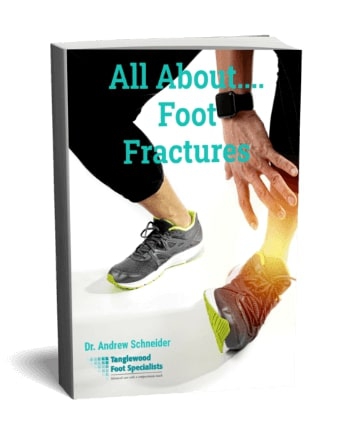Many athletes, especially runners, know to fear the all-too-common stress fracture. But how many of us really understand this kind of injury?
A stress fracture is a small, incomplete crack in a bone that is caused by repeated stress in an area in the body. 95% of stress fractures develop in the lower extremity; this kind of break accounts for 10% of all running injuries. Stress fractures are a common injury in runners because of the repetitive motion involved in striding over thousands of steps. This injury commonly occurs in runners when they have too many miles on their shoes, suddenly change the surface on which they are running, or ramp up the intensity level of their workout.
Risk Factors for Stress Fractures
Athletic activity can increase your risk for this injury. However, certain individuals will be at higher risk, including women, especially female runners and older adults. Previous injuries and poor alignment of the hips, knees and feet can also increase your risk. You can lower your injury risk by focusing on strength and flexibility, reducing the stress load on your bones. Make sure to replace worn out shoes, and always wear properly supportive foot wear when training. Finally, consider investing in custom orthotics in order to address biomechanical forces that place stress on the bones.
Signs of a Stress Fracture
Even with careful precautions, you may develop an overuse injury. The symptoms of a stress fracture include: tenderness over a localized area, pain when you put weight on the affected limb, and slight swelling around the area of the fracture. Runners who are most prone to getting stress fractures are women with amenorrhea (loss of menses) or post-menopausal women, because of the role estrogen plays in strengthening bones. Thinner athletes, and people who are not getting the proper nutrients to replenish their bones, are also at an increased risk for stress fractures.
As a runner, it's important to make sure that you are getting the proper nutrients to keep your bones strong; this can help you avoid developing stress fractures. Ideally, aim for 1000 mg of calcium per day and 200 IU of Vitamin D per day. You should also maintain a Body Mass Index (BMI) of at least 18.5 or higher and a body fat level of at least 14%. All of these factors will help ensure that your bones have the right nutrients to sustain themselves even through the stresses of daily running stresses.
Treat a Stress Fracture Promptly
If you think that you may have a stress fracture, immediately decrease the amount of exercise you are doing. It is also important to go see your Houston podiatrist right away. In the office, we can take an x-ray of the site. Then, because x-rays are not always able to detect a stress fracture, a bone scan may be required. And remember: just because you can walk does not mean you aren’t injured!
Why You Can Sometimes Walk on a Sprained or Broken Foot
We once saw a patient who twisted his ankle a few days previously while playing basketball. It hurt at first, but he told me in the office that the pain was about a 4 out of 10. He was able to wear his shoes and tolerate the pain when walking. He didn't think it was very bad, since he was able to walk on it, but felt it was worth getting checked out because the pain was still lingering.
When we saw him, the foot was a bit swollen and bruised, but it really didn't look so bad! There was a little bit of pain to the touch, but nothing that made him jump. We took some x-rays, just to see what was up. Well, he wasn't imagining the pain that he had: the x-ray showed that he’d suffered a partial fracture at the base of his 5th metatarsal bone. This is not an insignificant injury.
When you sprain your ankle, the supporting ligaments are often damaged. At the same time, sudden tension on the tendon courses down the side of the ankle. Sometimes, that tension is strong enough to break the bone to which it is attached. Often, that pressure results in a complete fracture of the 5th metatarsal base, which most often requires foot surgery to heal. Our patient was fortunate because the foot fracture was not complete. But, because there was significant weakening of the bone, it was still important to treat the fracture aggressively so it didn’t fully break and require later surgery.
Even with a complete break of a bone in your foot or leg, you will still be able to walk. Sure, the walking will be painful, but don't discount the possibility that you have fractured a bone simply because you are can bear weight on the injured limb. That's why it is vital to visit your podiatrist in Houston to have the foot evaluated for a broken bone. The best chance that you have to heal the fracture without surgery is to get it checked immediately.
Treat a Stress Fracture the Right Way
Our patient was fortunate to get off pretty easy with this injury. He wore a fracture boot for the next 6 weeks and made a full recovery. However, if he had not come into the office when he did, rest and removing weight from the injury would not have provided enough support. Instead, he may have needed to surgically repair his injury. Want to avoid invasive treatments and fully recover from foot and ankle injuries? if you have any symptoms of a stress fracture, don't take the chance of worsening your injury by walking around and delaying medical attention! If you have had an injury, whether you suspect a broken bone or not, get it checked by your Houston podiatrist today. We will make sure you receive a comprehensive evaluation and accurate diagnosis. Then, if we detect a stress fracture, we will provide you with the best treatment possible.















